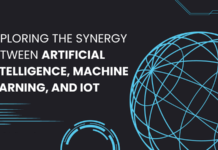Data heavily influence today’s modern world. Companies use data from countless sources in order to make well-informed choices and grow their business in the long run.
However, you can’t just take raw data and run them through a machine learning (ML) program right away. Raw data are dirty and filled with noise, inconsistencies, missing value, and incomplete information. For that reason, you first need to pre-process your data. This way, they’re easier to read and allow machine learning models to accurately predict trends or provide better insights.
In this guide, you’ll learn the basics of data pre-processing so you can use it to your advantage.
Defining Data Pre-Processing
Data processing is one of the steps in the data mining and analysis process. It involves taking raw data and transforming them into a format that can be easily understood and analyzed by machine learning models and computers.
The Importance Of Data Pre-Processing
Raw, real-world data are messy. They’re inconsistent and contain errors that can disturb a machine’s overall learning and result in false predictions. Not only that, but raw data may also have missing or duplicate values that can give an incorrect view of the overall statistics of your data.
Plus, raw data don’t have a regular and uniform design. Machines and computers read and process data as 0s and 1s. Thus, they require tidy and well-structured information so that calculating data becomes easier.
Data processing helps improve the overall quality of data you feed to machine learning models in order to come up with quality insights. Those quality insights would, in turn, allow you to make quality decisions.
4 Steps Of Data Pre-Processing
So how exactly does one go about processing raw data? Here are the four methods involved in data pre-processing:
1. Data Quality Assessment
First off, you need to take a good look at the raw data you have and determine their overall quality, consistency, and relevance to your project. There’ll be various data anomalies and inherent problems in almost any data set. These include:
- Mixed Data Values: Different data sources using different descriptors for features
- Mismatched Data Types: Different data formats when collecting data from various sources
- Missing Data: Blank spaces in the text, missing data fields, or unanswered survey questions are common in raw data.
- Data Outliers: These are data with an abnormal value distance from other data in a random sample from a population.
2. Data Cleaning
Once you have a general idea of the overall quality of your data, it’s time to start the cleaning process. Data cleaning means adding missing data and repairing, correcting, or removing irrelevant or incorrect data from the data set.
This is the most important step of pre-processing since it helps ensure that your data are ready for the next steps. Depending on the kind of data you’re working with, there are various cleaning techniques you’ll need to run your data through, and those include binning, clustering, and regression.
After data cleaning, you’ll have a smaller data set. At this point, you can perform data enrichment or data wrangling to add new data sets. Then run them through quality assessment and cleaning again before including them in your current data set.
3. Data Transformation
Data transformation will start the process of converting the clean data into the proper format that the machine learning model can understand and analyze.
In general, this is carried out using one or more of the following methods:
- Normalization: This is the most common data transformation technique. It scales data into regularized ranges for easy and accurate comparison.
- Aggregation: All data are combined together in a single, uniform format.
- Discretization: This method pools data into smaller intervals.
- Feature Selection: This is the process of deciding which variables are essential to your analysis. Those features are used to train ML models.
- Concept Hierarchy Generation: This method requires you to add hierarchy between and within your features that weren’t present in the original data.
4. Data Reduction
Despite cleaning and transforming your data set, you may still have some data left to work with. And the more data you have, the harder they are to analyze.
Data reduction can help reduce the representation of the data set into a smaller volume but still produce the same quality of results. This makes analysis more accurate and easier and cuts down on data storage.
Data reduction strategies include:
- Dimensionality Reduction: This involves reducing the amount of data used through feature extraction. It aims to minimize the number of redundant features in machine learning algorithms.
- Data Cube Aggregation: This data reduction method transforms gathered data into a summarized form.
- Attribute Selection: This method essentially combines features or tags so that data can fit into smaller pools.
- Discretization: It divides the attributes or features with a continuous nature into data with intervals.
Conclusion
Good pre-processed data can help you with data-driven decision-making. Although data pre-processing can be a tedious task, when you have your procedures and methods properly set up, you’ll be able to reap its wonderful benefits for your business’ bottom line.








